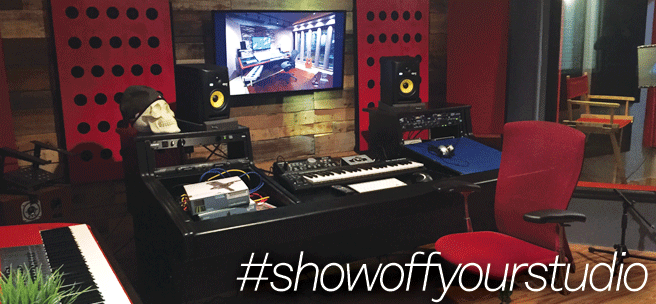The History of MusicTech – 150 Issues, 12 Years & 60 Landmark Releases
For those of you who are only aware of MusicTech as an online entity you may not have read our long-running magazine. We’ve just celebrated the release of our 150th issue after 12 years of publication. In this look back, Editor Andy Jones takes you on a guide through the past, present and future of […]
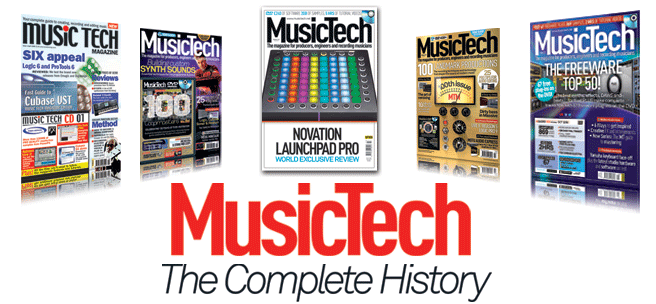
For those of you who are only aware of MusicTech as an online entity you may not have read our long-running magazine. We’ve just celebrated the release of our 150th issue after 12 years of publication. In this look back, Editor Andy Jones takes you on a guide through the past, present and future of MusicTech.
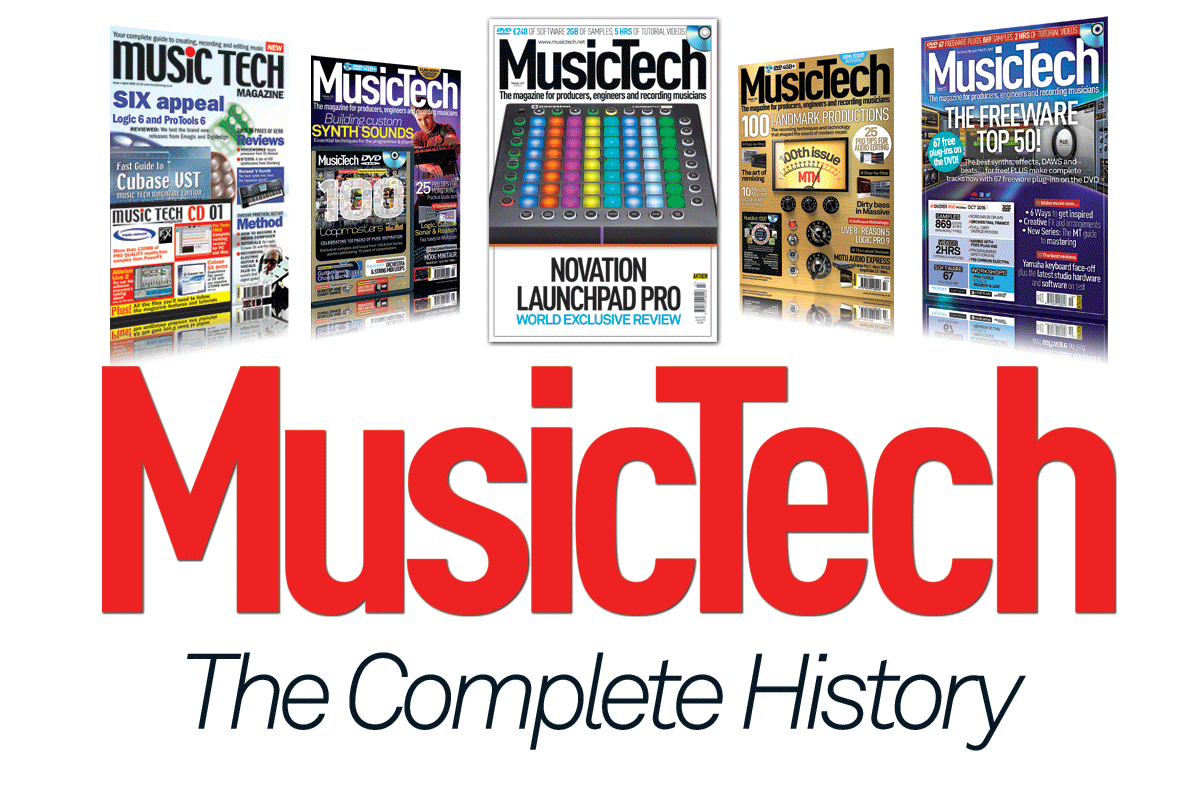
Great historians will tell you that what you learn from history you can apply to your present and future. Indeed, some might go as far as to say that we simply must do so – if we don’t, then how can we progress?
We understand this all too well in the world of music production. MusicTech might well be a technology-based magazine with a big beady eye on future technology and music trends but, especially with the current retro-healed world of studio technology, we know only too well that you can and should learn pretty much everything from your past.
But, fear not, this isn’t going to be one of those sentimental journeys where we look back and say that everything was much better in those days – far from it. Nor will we be laughing at the things we used to use to make music, in an ‘aren’t we so much more sophisticated now?’ type of way. Well, not that
much anyway…
150 issues is a long time in publishing and a landmark that few magazines these days ever get to, but forget about any more self-congratulatory back slapping from our side, because it’s also a large chunk of time in the world of technology.
The last few decades in music production have seen as big a change in music making – and indeed the way we consume the music that’s being made – as there has been in modern history. Everyone now has the possibility of having the tools at their fingertips to make great-sounding music, and more and more people are taking advantage of it to do just that (whether you believe the results are a ‘good a thing’ is another matter).
So while these technology advancements have made music production easier, there have also been significant and dramatic changes in style, fashion, opinion and philosophy over the last 12 and a half years (to use a more human timescale). Yep, there is a lot to take in!
150 issues ago, the music technology world was a very different place to the one we live in now – but also, in many ways, very similar. We were in the midst of a synthesiser revolution; all the major DAWs that we know and love today were being updated and were maturing rapidly.
As a result, people were discovering that you could do pretty much everything on software. Change the odd word here and there and you could describe things in the same way today. But, actually, the big difference is down to how important the studio environment has become…
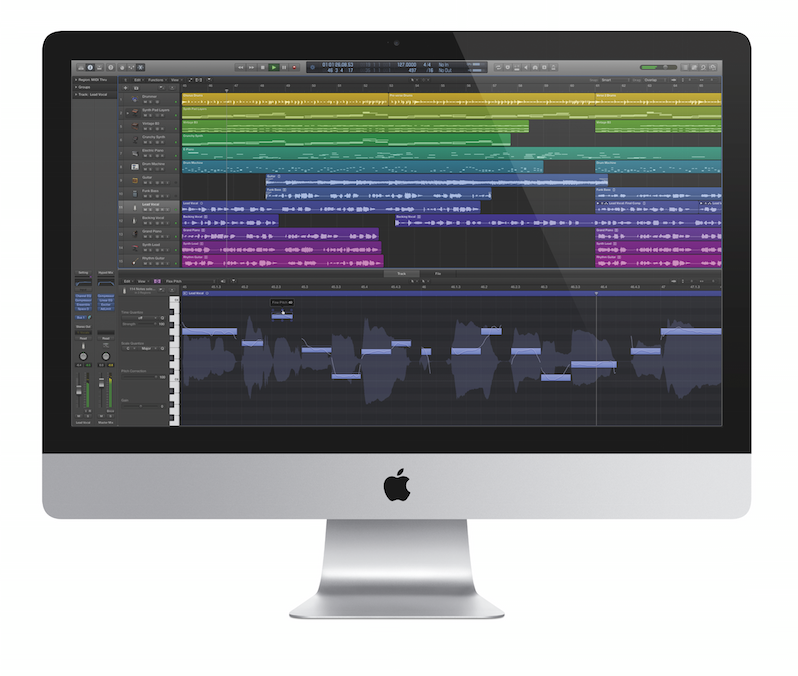
Individual, Environmental…
A dozen years ago, the flow was definitely towards a computer-based set-up, with everyone and his dog thinking that software was going to be the next big thing. And it was! In the first year of MusicTech’s existence, we witnessed the arrival of the first big (successful) analogue soft synth emulations from Arturia and GForce, we saw big companies such as Steinberg launch attempts at software workstations… it all seemed to be obvious where we were going: right in there and on to our computer processors…
But it wasn’t to be that simple. Today’s producer is now much more concerned with not just the gear and software they are using, but the environment in which they are using it, too – and, get this, the hardware that they are using.
Yes, our studios have become – by design, accident, desperation or need – more hardware-based. We have become more appreciative of tactile music making interfaces, and definitely more discerning when it comes to sound – so using retro- based hardware, whether original, repackaged or reproduced, to go back to the quality. Learning from history, perhaps?
So, yes, we can do it all on a laptop, but many of us focus on what is going on outside the laptop – as that particular dream didn’t pan out as expected. We’ll still use the laptop, for sure, but make it the centre-piece of an inspirational room with great interfacing for audio and, of course, human interaction; make sure the source recordings are perfect, and that the devices we are listening to the results on are as good as we can afford. And we are, thank the lord, becoming less about looking at our mixes and more about listening to them again.
So, now we are in the middle of another synthesiser revolution – a hardware one – DAWS are still getting major updates (as I write, four have just received major additions), but manufacturers are thinking more about controlling them in other ways. And people are discovering that you can do everything… with hardware.
One of the most significant features we’ve run in the magazine, that brings this home, is Show Off Your Studio, where we simply get you to send in pictures of your music-making set-ups. Of course, every single one is different and every studio is brilliant in its own way (and boy, are they brilliant?)
So the technology we have used over the last 150 issues might have ebbed and flowed between analogue and digital, hardware and software, but the room in which we house it has become simply incredible. Today’s studio must now be inspiring, comfortable and a great place to be. There is no one right way to create this – or at least no obvious way. Instead, there’s a multitude of brilliant ways, whether you choose to house your studio in a bedroom or a shipping container
You are creating spaces that, yes, are full of gear and well treated acoustically, but you are creating spaces to create – and we are all moving more towards an environment that’s like a great music-making space should be.
Here’s a look back at the history of the magazine and the recent history of music technology…
MusicTech – The History
Starting in April 2003, MusicTech launched with updates to Logic, new software from Spectrasonics, a big fat synth from Roland (the V-Synth) and the chance to win a set of monitors shaped like eggs (Eclipse TD 508PA). Fast forward 150 issues and things certainly haven’t changed on the face of it – each company is still producing the same type of product, albeit with a lot more power, and usually for a lot less money. Logic, for example, cost £649 12 years ago and is a mere £140 now…

As we progressed through early issues, we covered several stalwarts in music technology, including Yamaha Motifs, Cakewalk soft synths (Project 5 anyone?) and, er, the Spaceshuttle A/V controller – a device that attempted to replace your mouse with, OK, a bigger mouse.
Arturia quickly made a name for itself with the Moog Modular V soft synth, while controllers were all the rage with Evolution bringing out its UC-33, which set something of a standard for the time. Issue 3 saw a piece of software from a new company called Native Instruments, called Vokator on test. “Is it a vocoder? Is it a sampler? Is it a synthesiser?” we asked.
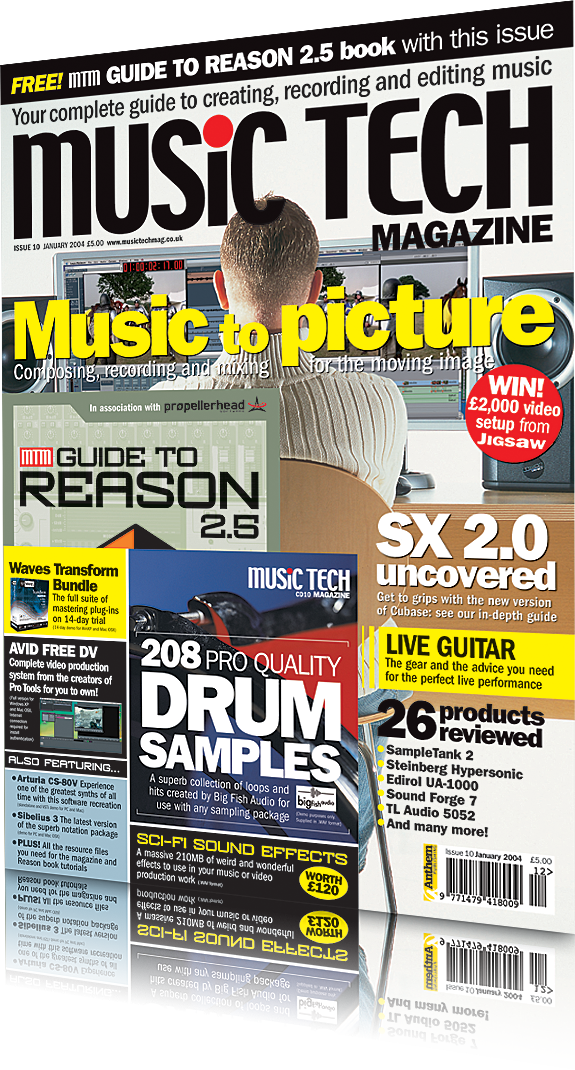
All of the above, it turned out, and we also gave it a plus point for having “PC and Mac versions in the same box”. Bless.
We weren’t afraid of covering mobile technology back then, although chunky PC laptops and big interfaces were the tools of the day – no iPads then – and this writer remembers creating music on a laptop in an airport in 2003, proving that we could finally do it on the move. Although quite why it was such a big deal remains something of a mystery…
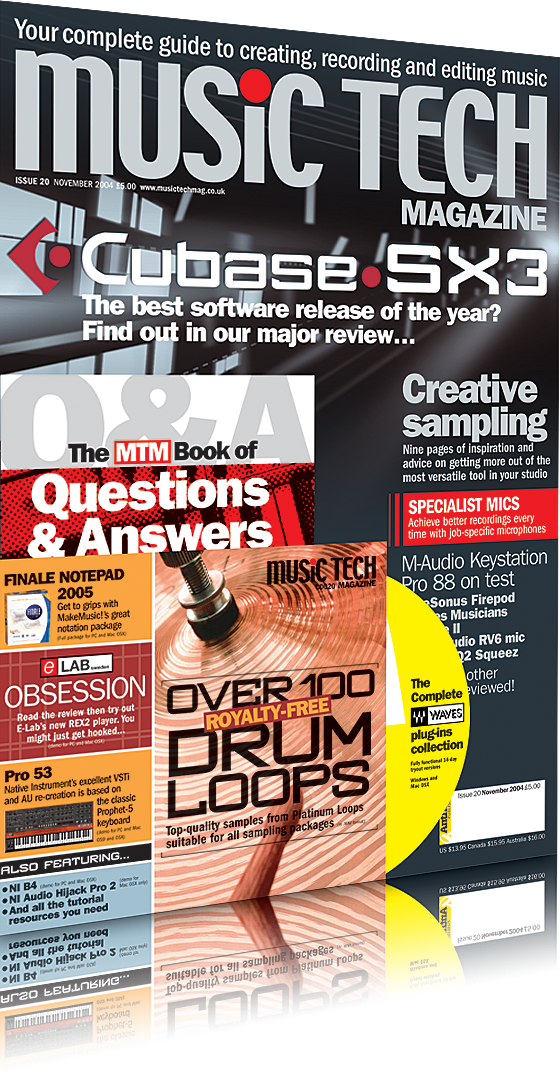
FireWire technology was big news and other releases set to stick around for a while included MoTU’s MachFive sampler, Roland’s Fantom technology, Novation’s ReMOTe controllers and Digidesign’s 002 interface.
Korg’s Electribe was literally lighting up the industry, with the MX-1 version featuring a glowing valve to emphasise its warm sound quality (still a great unit if you can get your hands on one by the way).
Plug-in Things
Instrument plug-in technology was becoming not just the norm but slick and well implemented in software such as Cubase SX. We also looked at Emagic’s Space Designer software, one of the first plug-ins for the masses that attempted to emulate rooms by modelling impulse responses. At £449, yes £449, it was massively expensive. Who’d have thought Apple would buy it up and slap it into Logic…
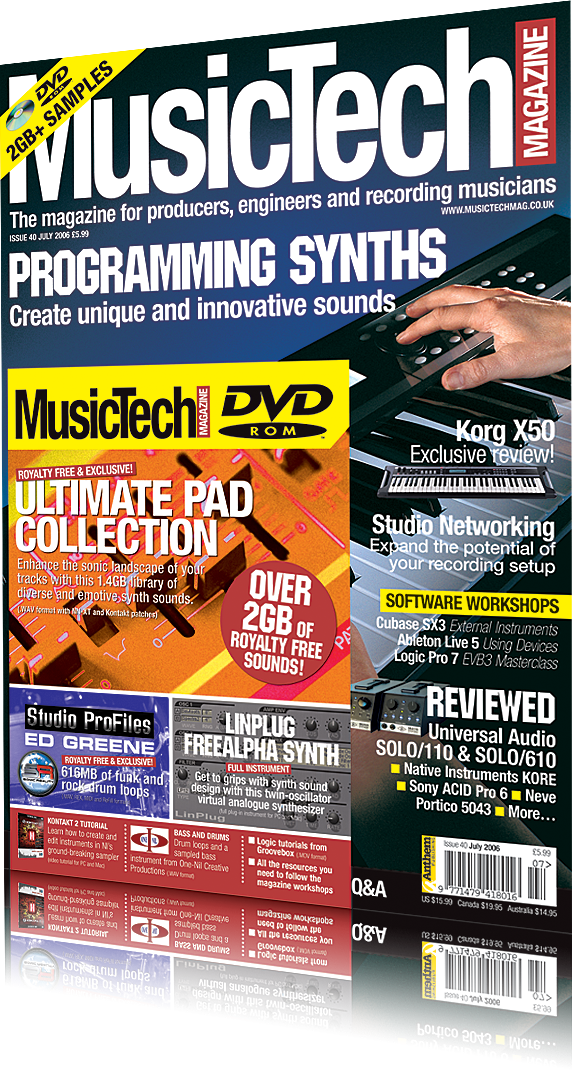
Hardware wise, Korg was setting an example with its microKontrol, which featured pads, knobs and sliders and a look that is still around today. Meanwhile, the same company’s Kaoss technology attempted to embrace video with KP Entrancer, a solid block of hardware with proper old-school switches that still works wonders today.
Again, Korg was at the blurred edge of synth hardware and software tech with the Legacy Collection bringing some classics back to life in software, all with a USB hardware mini MS-20 controller. 11 years on and we have the real thing from the same company.
How times change… Back to plug-ins and Gmedia’s (to become GForce) impOSCar was to redefine classic synth emulation, both in terms of sound (“wonderfully fat and aggressive”) and price (just £100), but Vocaloid Lola would fair less well in some quarters. Apple’s GarageBand is a software title that lives with us on iOS devices to this day, but at £39 now seems like a rip-off, with the latest version free (albeit with a £2.99 upgrade to get you everything).
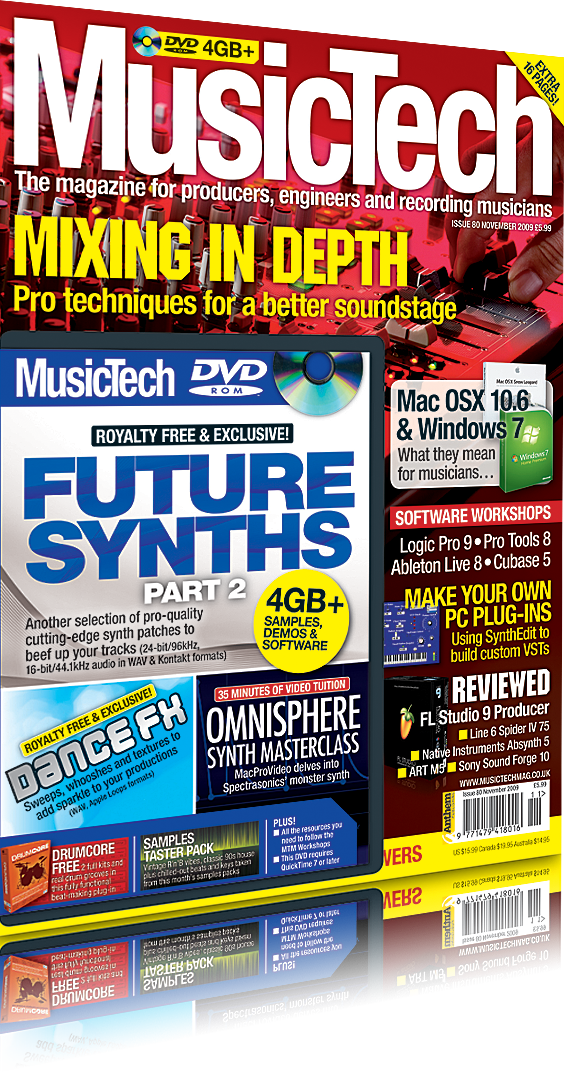
More Mobile
By the mid-2000s, music peripherals were finally starting to get a little bit more mobile, so those chunky laptops we looked at were becoming slimmer, while controller keyboards from the likes of Edirol and M-Audio were getting far more portable – the PCR-1 and O2 being fine examples. Microphones were also becoming more and more affordable, with sE’s 1A, 2A and 3 all scoring well.
It was also early days in instrument libraries, with Yellow Tools Majestic being a great example of what was to come with its “massive” 16GB library and still massive £269 price tag.
After a series of software synths and kits, including the mighty Reaktor and Absynth, Native Instruments would branch out with Guitar Rig, which would open up the computer to guitarists and synth heads to guitar effects – everyone’s a winner. Meanwhile the same company released its Express keyboards – remember them?
Cut-down versions of its organ, FM and Pro-53 plugs, all in software, but almost like software versions of Yamaha’s new ReFace keyboards. Not for the first time,we will say: “how technology twists and turns…”
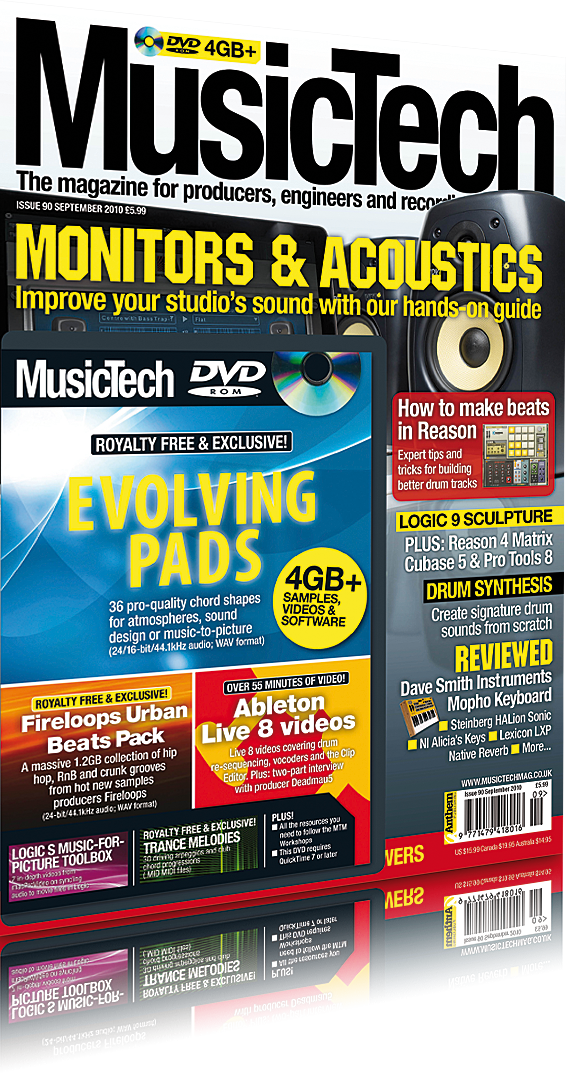
Quietly, in the background, we must give a mention to the companies producing quality outboard in software. While UA was yet to make its big mark, Waves was consistently coming out with products such as Musicians Bundle, which offered compressors, EQs and effect plug-ins for rather less money than you’d expect from Waves (£249), while TC’s Powercore slid into its Compact form but still had the rather cool blue light from the rack version.
Computer power was still a big requirement for music – it still is, after all – but back in the days of 1GB being good for memory, there were plenty of dedicated companies producing dedicated machines for music making, including Inta-Audio, Alienware and Millennium Music. An ever-crowded microphone marketplace was joined by Sontronics (we scored its Orpheus and STC-1 well), while hardware classics – so prevalent now – were starting to make a real comeback with AMS
Neve reproducing its 1073 preamp.
Late 2005 saw Digidesign, in its pre-Avid days, making the most of its acquisition of M-Audio by offering M-Powered, a complete DAW package for just £239. Modelling packages continued apace, none more obviously than by Line6, which produced the ubiquitous Pod and, later, the Toneport.
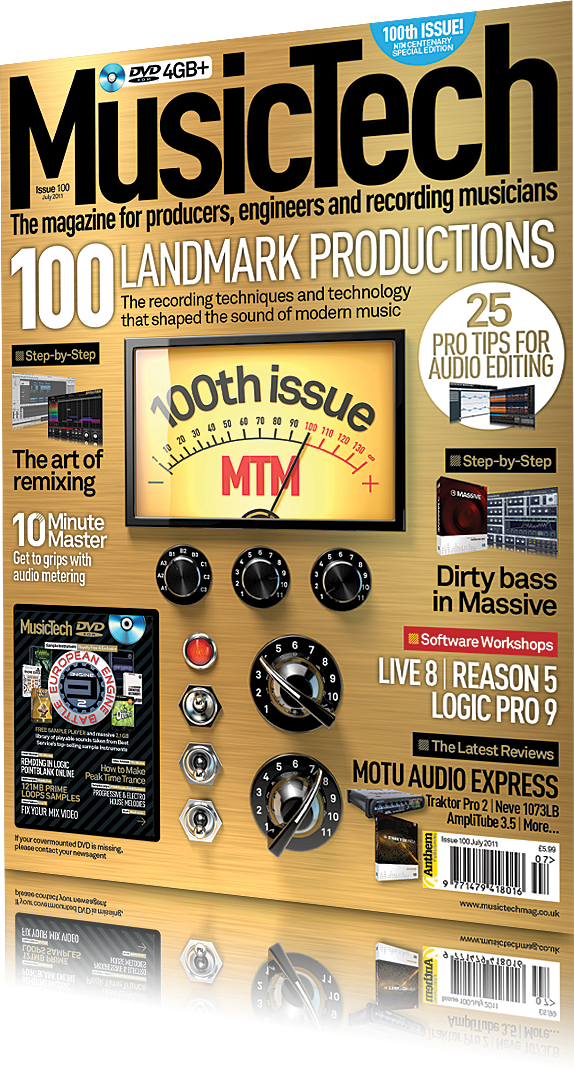
2006 became a big software year, with Live moving to v6, Reason to v3, Cubase to v4 and debuts from future MusicTech favourites EZ Drummer and Modartt Pianoteq. But it also signalled the start of one company’s move from software to hardware and (very arguably) the start of the seismic shift that has led to today’s more hardware-based studio world. Such drama should have been heralded in with a more all-singing, all-dancing device; instead, Native Instruments released Audio Kontrol 1.
It was a nice interface for laptop owners and its bundle of NI software and the ‘K’ in its name were pointers to the shape of (hardware) things to come…
In 2007, Moog’s Little Phatty synth was causing a stir with a special Stage edition, very much a favourite in MT studios today, and a continuation of the reboot of the Moog brand that has seen it once again become the hardware synth company to be reckoned with in 2015. USB and FireWire had become standards and USB mics were starting to make waves with the sE USB 2200A announced at the year’s Winter NAMM show.
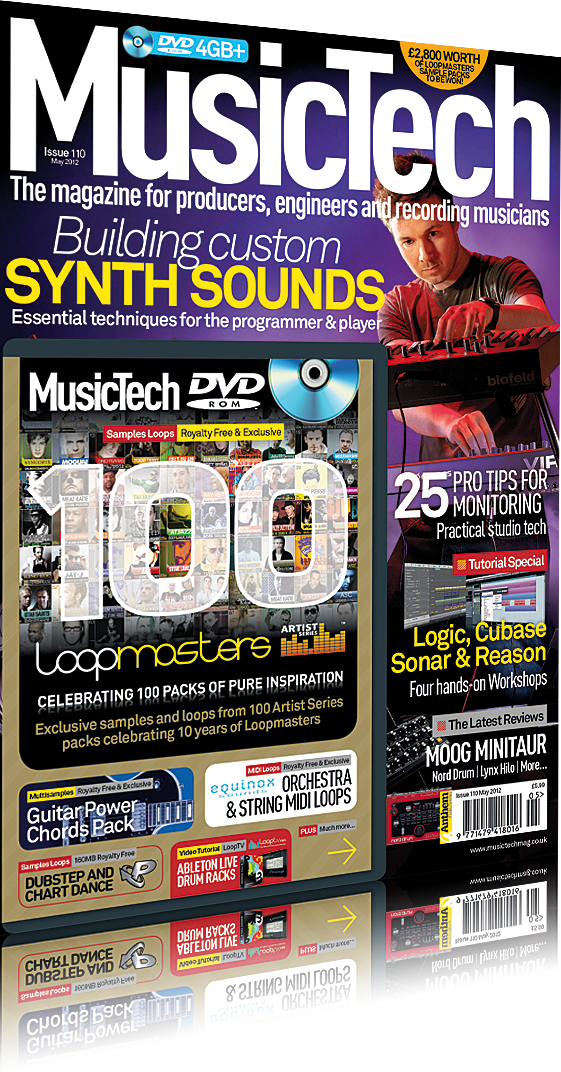
More tape simulation and restoration packages were becoming available, the former another sign that all things in the software world were not quite as they seemed and that we were starting to see a yearning for older-style recording.
However, newer packages and companies also emerged to offer new ways of utilising effects and software, with iZotope leading the way and its RX software consistently scoring highly over four versions.
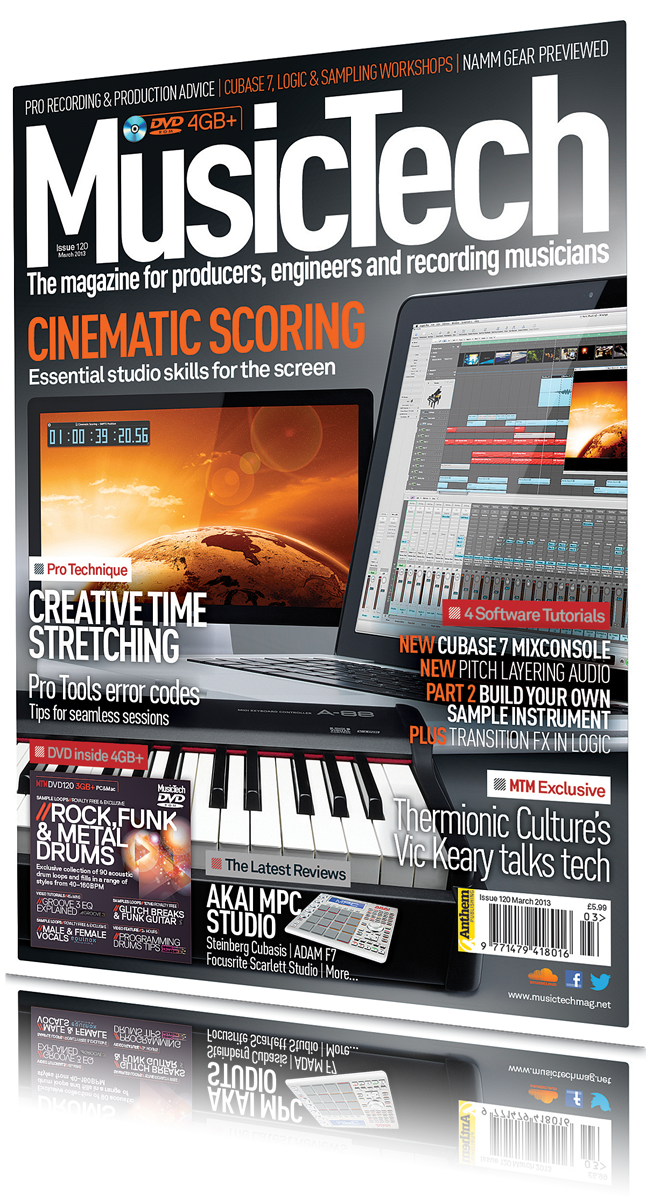
As we hurtled towards the end of the ‘10s’, backwards wasn’t the only way that music technology was heading, though. Technology was also marching all over the DJ world with NI releasing Traktor Scratch, Rane doing the digital DJ thing with Serato Scratch and M-Audio involved with Torq, among many other companies.
Universal Audio was fast becoming a standard, with essential studio tools regularly added to the UAD platform, putting it easily up there with SSL and TC systems. FireWire was everywhere – ESI’s DuaFire and M-Audio’s Profire finally adding to a huge list of names you can call a product with the word ‘fire’ in…
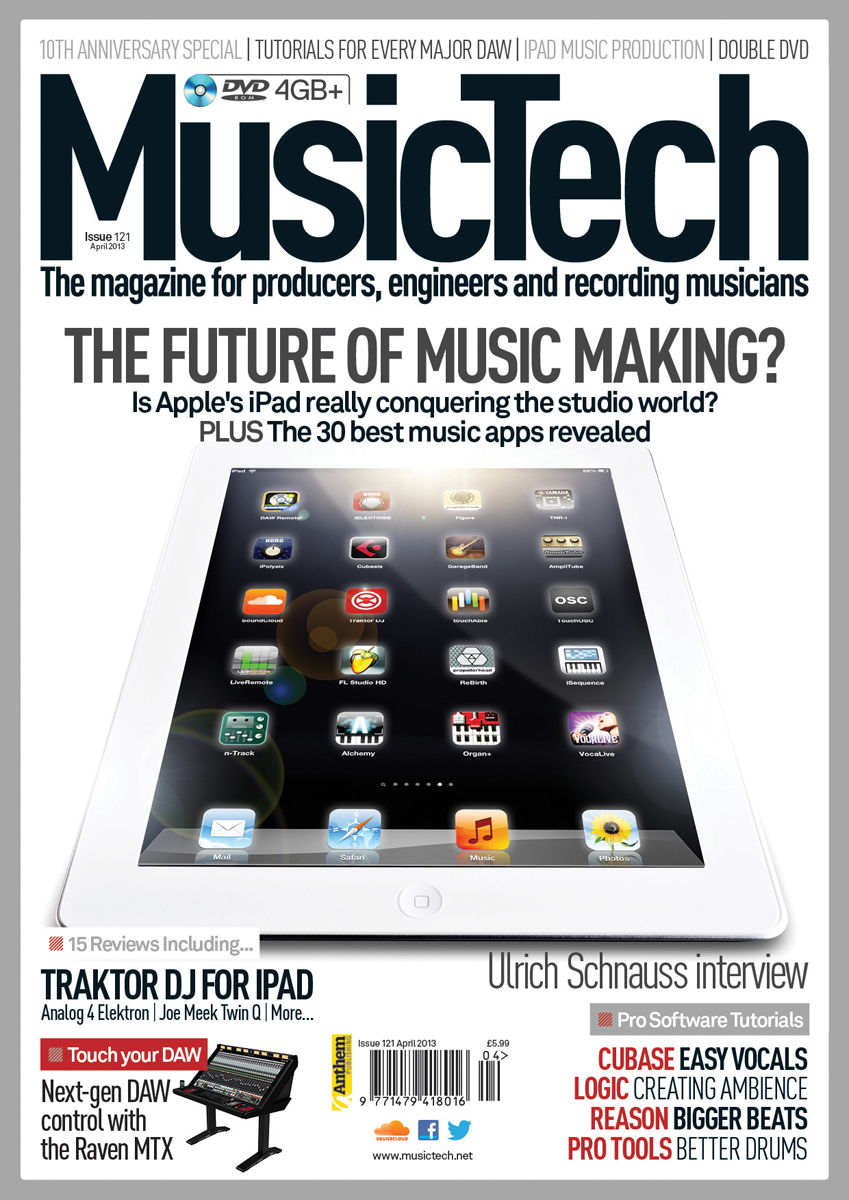
Going Mobile (properly)
2010 saw the first iPad released, and while the iPhone had garnered some attention from the music-making industry (and, of course, the music-making app community) it was really the larger and easier to touch iPad that captured everyone’s sonic imagination. Yearly NAMM conventions for music gear launches came to resemble Apple conventions as people attempted to jump on the Apple bandwagon and cash in on this new mobile musician device.
But, in truth, it’s not been until more recent years that it has truly become a serious proposition and now it even warrants its own Top 10 on these pages so important has it become for the musician community. If mobile music making was maturing, so was the virtual desktop emulation, with UA now flying the flag for hardware-driven outboard plug-ins, and a whole raft of companies producing incredible new plug-ins and virtual recreations of classics.
If anything, the market in the 2010s was becoming saturated with great paid and freeware software. Piracy had also hit hard and something had to give, but we’d already seen the shape of things to come…
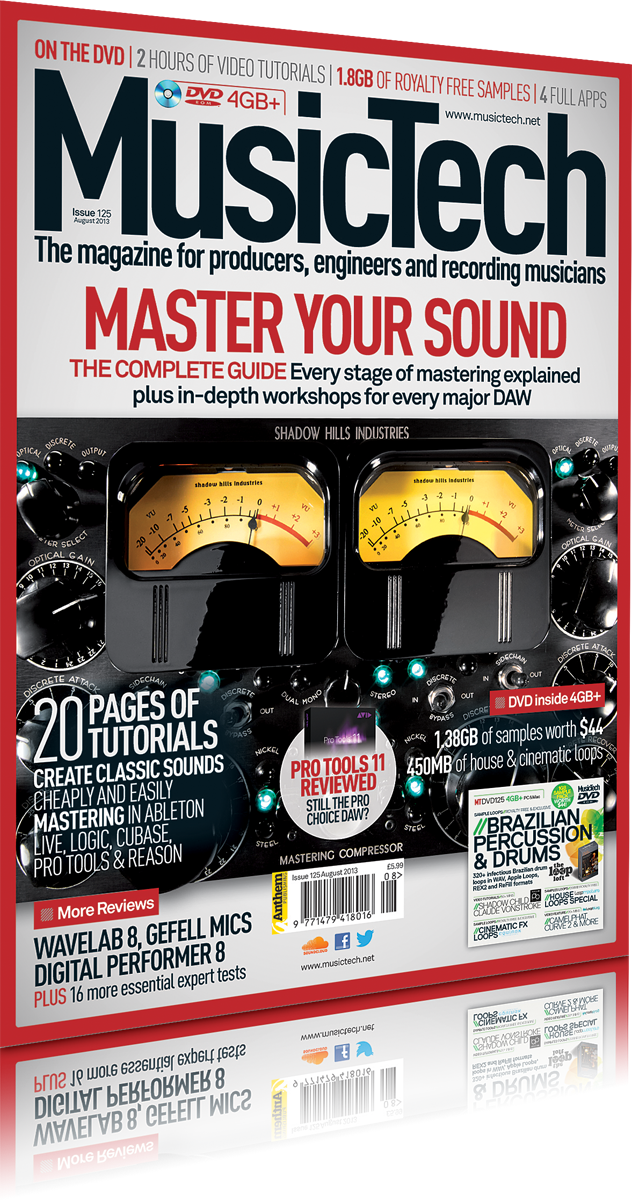
Arturia’s Origin and Native Instruments’ Maschine were just a couple of products signifying a shift – even for traditional software companies – back to hardware. While software had matured, a mix of the need for tactile control and a workspace that looked like you were composing music rather than emails started a shift back to the glorious studio spaces that we talked about at the start of this feature.
Software companies started releasing revolutionary hardware (Komplete Kontrol anyone?) and companies such as Studio Electronics, who had stuck by traditional analogue synth designs while the world went soft and digital, began to reap the rewards of a production world rediscovering the joy of analogue, hardware outboard and instrumentation, vinyl and even tape.
So, to sum up where we are after a turbulent decade or more in music technology, it’s the most positive environment for music making that we’ve ever had. You can make albums on a laptop, create complete tunes on an iPad, buy new classic hardware synths, remakes of any vintage microphone or piece of hardware outboard gear, or emulate them all in software, should you wish. You can control that software like never before with hardware that enables you to use your screen less and your ears more.
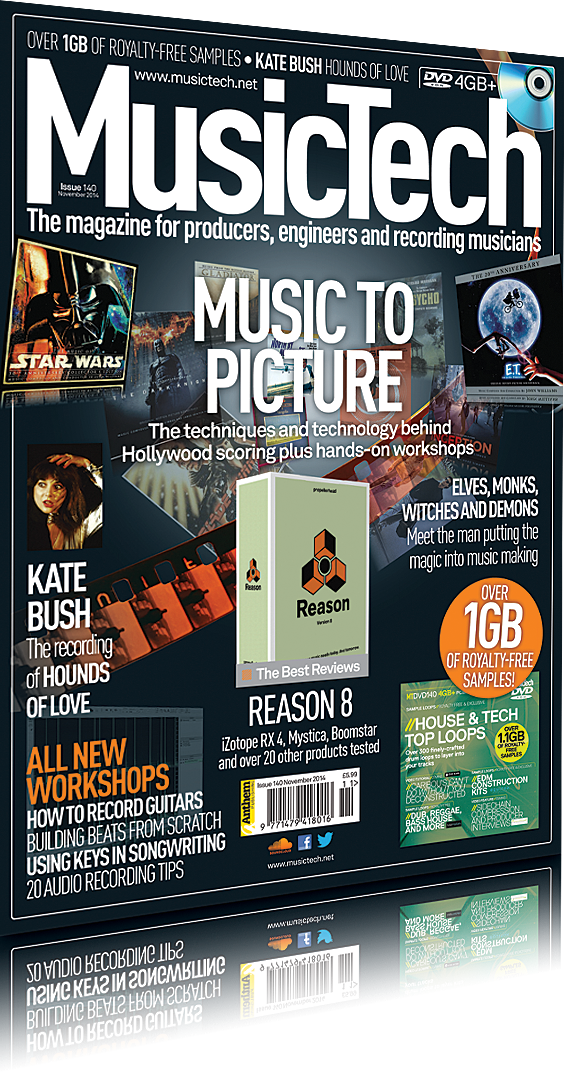
You can play music with keys, with grids, by touching, by twisting, by rotating, even by thinking. You can do it all with glorious colour, with fluorescent blue lights, and with blinking lights and you do do it… in creative environments that sound and look like world-class studio facilities.
Music making has never been so satisfying, so creative, offered so many options, so much flexibility and so many routes from head to speaker. And the environments in which that music has been made have never been so incredible, so while we celebrate 150 issues, it’s really your creative spaces that we are celebrating, so turn the page for the last hurrah, and keep those pictures coming for Show Off Your Studio.
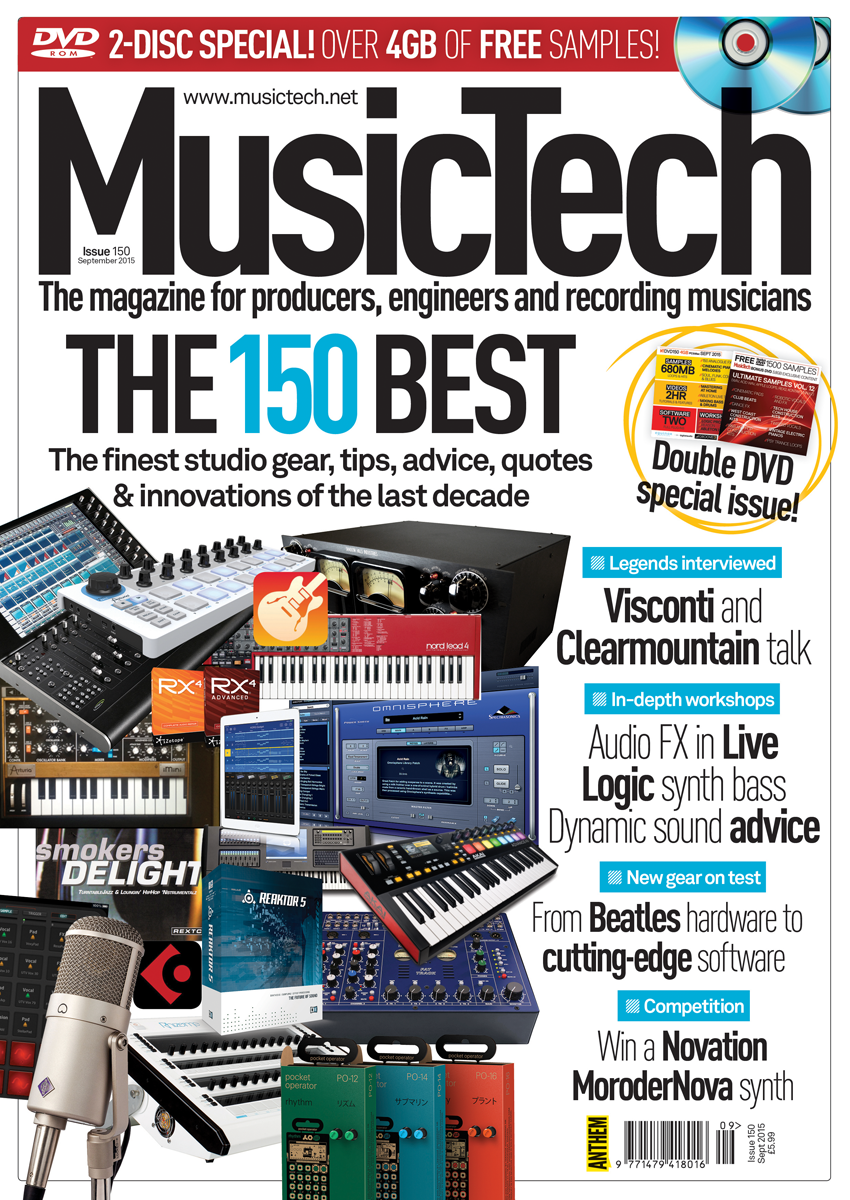
Here’s to another 150 issues of MusicTech, and doubtless some more crazy twists and turns in production along the way…
